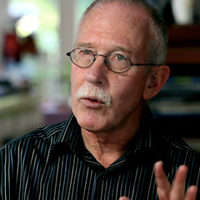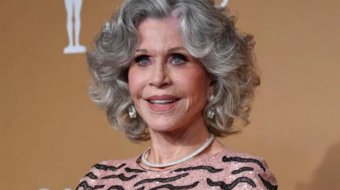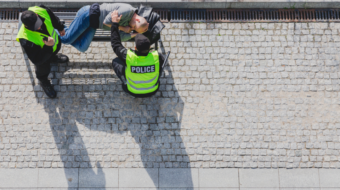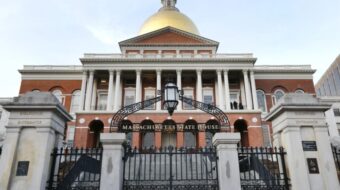
In the Bay Area and Los Angeles, homeless activists are taking the tactics of Occupy a step further, using encampments, or “occupations” as mobile protest vehicles. Within them, the people sleeping in the tents develop their own community. They organize themselves and work together. They make decisions collectively. And they develop their own ideas about what causes homelessness, and for short term and long term solutions to it.
They’ve created what they call “intentional communities,” not just as a protest tactic, but as places where they can gain more control over their lives, and implement on the ground their own ideas for dealing with homelessness.
In rural California, homeless people are overwhelmingly farm workers. Although they’re working, they don’t make enough to pay rent, and still send money back to their families in their countries of origin. In settlements on hillsides in San Diego, or next to the Russian River in Sonoma County, they create communities bound together often by the indigenous language they bring with them from home.
These photographs are a window into the reality experienced by homeless people in urban and rural California. While there are important differences, it is not surprising that the experience and the circumstances are so similar, as is the effort to create community, no matter how difficult the conditions. In both urban and rural areas people also fight for better housing, and for their right to exist in a public space. Their voices reflect on the experience:
“We’re developing an actual city through a bunch of homeless people coming together. We have a community here. Is it a perfect solution? No. Housing is the permanent solution to homelessness. But this is a helluva good start. The people responsible for solving homelessness are the homeless themselves.” – Michael Lee
“It should be a more secure world now without the Cold War. I believe a person should not have to worry day to day where they’re going to lay their head or get their next meal. That should just be a given. This is an occupation because we are not camping out on someone else’s property. We are occupying our own property.” – James Kelly
“We hang out here because we’re not allowed in the outskirts of downtown. People have a label on us. They talk about ‘those homeless people.’ They never say ‘the people.’ They see me as a person who eats out of a trashcan.” – Linda Harris
“The Skid Row community is one of the most vibrant communities in Los Angeles. Folks take care of each other, know each other and live very densely. Here you either create community or you get wiped off the map.” – Pete White
“I’m a soldier in the war on poverty.” – General TC
“When I first arrived I rented an apartment, but I couldn’t make enough money to pay rent, food, transportation and still have money left to send to my family in Mexico. I figured any spot under a tree would do. We’re outsiders. If we were natives here, then we’d probably have a home to live in. But we don’t make enough to pay rent.” – Rómulo Muñoz Vazquez
“It is very difficult living out here. We don’t have money but we have no other choice. My sister and I tried to get a job picking strawberries but they wouldn’t hire her. I still can’t find a job. When we go and look for employment they tell us they don’t have work for women.” – Sofia Perea Bravo
This photo documentary was developed with the cooperation of California Rural Legal Assistance, the Community Action Network in Los Angeles, and the Frente Indigena de Organizaciones Binacionales. The purpose is to
– document the similarities between rural and urban homelessness and lack of housing
– promote common housing ideas that can meet the needs of both urban and rural homeless people
– develop communication between urban and rural homeless and housing-deprived communities, to help people advocate for themselves.
This show is especially dedicated to the homeless activists of Berkeley, who were first driven out of Liberty City last fall. Then they were driven from the Post Office Camp, where they’d lived for 17 months, just as I was printing the photographs shown here. Their vision is one we should pay attention to. Instead the U.S. Post Office refused to listen or see what is in front of them, and used the brute force of the Postal Police to drive people away. Instead of the camp and its residents, the City of Berkeley now has this fence and empty, fenced-off space – a monument to hostility to the poor and an eyesore in this supposedly progressive community.
ON THE STREETS : UNDER THE TREES
Homelessness and the struggle for housing
in urban and rural California
Photographs by David Bacon
Asian Resource Gallery
317 Ninth St at Harrison
Oakland, CA
May – June, 2016
Reception: Tuesday, May 24, 6 p.m.
for more info: dbacon@igc.org, gjungmorozumi@gmail.com
http://davidbaconrealitycheck.blogspot.com/2016/05/on-streets-under-trees-photo-exhibition.html
Sponsored by East Bay Local Development Corporation
Photo: David Bacon










